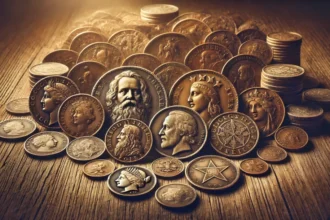Some posts take off like wildfire. Others? They die quietly, lost in the scroll. It isn’t random, and it isn’t just the algorithm playing favorites. Viral content taps into psychology — feelings, timing, and the odd little social cues that make us decide, almost instantly, “Yeah, I’m gonna share this.”
That’s really the whole secret. Not luck. Not magic. Psychology.
Why do some things catch while others flop?
Open Instagram right now and you’ll see it. A 7-second clip with millions of plays. Right underneath, another video — same format, similar topic — that barely scraped 50 likes. Same app. Same tools. Different outcomes.
So what’s happening? Why do some things stick?
It comes down to the invisible levers of human behavior. The stuff people don’t talk about in “how to grow fast” tutorials but absolutely runs the show.
Emotion: the fuel behind the share button
Nobody passes around cold hard facts. We share what makes us feel.
Researchers have been shouting this for years: content with high emotional intensity is far more likely to spread[1]. Doesn’t matter if it’s laughter, awe, or outrage. Flat content dies.
Think back to the Ice Bucket Challenge. It wasn’t about water and charity paperwork. It was the mix of humor, shock, and belonging. That cocktail of emotion was irresistible.
Here’s the truth: if your post doesn’t hit someone in the gut, it won’t move them to tap “share.”
Sharing is self-expression
When you hit repost on a motivational quote, you’re not just saying, “I like this.” You’re saying, “This is me.”
Social media is basically a giant wardrobe we dress ourselves in — not with clothes, but with content. A clever meme, a niche joke, a reel about hustle culture — each one tells your followers something about your identity.
That’s why certain posts spread like wildfire. They don’t just entertain. They let people declare, “This is who I am.”
Social proof: the numbers game we pretend doesn’t matter
We all know it, even if we don’t like admitting it. A post with 1,000 likes feels different from one with 12. It just does.
That’s social proof — the human instinct to assume something is valuable because other people think it is. Online, the effect multiplies. Every heart, every comment, every follower number becomes a signal of credibility.
And here’s where social media growth tools make sense. Not in some shady “fake your way to fame” way, but as a nudge. For small creators, getting stuck at zero is brutal. A little visible traction can flip the script: people lean in, the algorithm notices, and suddenly the content gets a real chance. Early numbers aren’t everything, but they can crack open the door.
Timing is half the battle
The best joke in the world told at the wrong time? Crickets. Same thing online.
Memes thrive because they ride cultural waves. Oreo’s famous “You can still dunk in the dark” tweet hit during the Super Bowl blackout in 2013. Perfect timing. If they’d posted that a day later, nobody would care.
The internet rewards relevance. Be too early, people don’t get it. Too late, you’re ignored. Hit the moment? That’s where magic happens.
Surprise and curiosity keep us hooked
The brain notices what’s new. It can’t help it.
That’s why unusual hooks — a twist, a visual shift, an odd question — slice through endless sameness. Curiosity is uncomfortable. We share because we want the itch scratched, or because we want to pass the itch to someone else.
Headlines phrased as questions often outperform statements. “Why do some posts vanish while others take off?” nags at you more than “How posts go viral.” Open loop. Must click.
Viral content is light and portable
Dense, complicated posts don’t travel far. They’re too heavy.
The things that spread — catchphrases, memes, short clips — are like digital proverbs. Easy to grab, easy to pass along. That’s the reason dance trends go global faster than nuanced essays on creativity.
If your post can’t be repeated or re-shared without effort, it probably won’t travel.
Virality is a system, not a single event
Here’s what people miss: going viral isn’t just about one “amazing” post. It’s about the chain reaction.
One person shares. Their circle reacts. The algorithm senses velocity. Then the platform widens the reach.
Think of it like a fire. The post is the spark. But unless the conditions are right — wind, dry brush, oxygen — nothing catches.
So the real question isn’t “Was my post good?” It’s “Did I design it for the system?”
Why most posts never make it
Failure isn’t mysterious. Most posts flop because of one of three reasons:
- No emotional hit. It’s fine but forgettable.
- Too much friction. Hard to understand, too long, too messy.
- System mismatch. Wrong platform, wrong timing, wrong vibe.
That’s it. No curse. Just missed levers.
A working checklist for creators
If you want your content to spread, check three boxes:
- Psychology: Does it stir feelings, spark identity, or poke curiosity?
- Design: Is it clear, simple, and platform-ready?
- System: Does it match the moment, the algorithm, and social proof cues?
Leave out one piece, the chain reaction stalls. Align them, and you’ve got a shot at fire.
The creator’s dilemma: pressure vs. momentum
Let’s be honest: chasing virality is exhausting. The grind of daily posting, the sting of silence, the weird pressure to always perform.
This is where small wins matter. Having some visible traction — even just enough to stop looking invisible — can free you up to focus on the actual content.
But remember, numbers open doors. Only real connection keeps people from walking right back out.
Strip it down: virality is connection
When you take away the metrics, you’re left with something simple: humans connecting with humans.
A viral post, no matter the genre, is basically saying, “You feel this too.” That’s why social justice threads, dog videos, and silly dances can all rack up millions. Different genres, same principle.
We share because it makes us feel less alone.
What this means for you
If you’re running a business, make posts that carry emotional weight for your customers.
If you’re building a personal brand, ask: what part of me does my audience want to claim for themselves?
If you’re chasing cultural relevance, watch the timing — culture doesn’t wait for your calendar.
The ones who win aren’t the cleverest. They’re the ones who align with human behavior.
The spark, the fuel, the fire
From the outside, virality looks like luck. From the inside, it’s closer to physics.
The spark is emotion. The fuel is identity. The wind is timing. The oxygen is social proof. Put them together, and you’ve got the conditions for fire.
Not every post will catch. But the ones that do? They’ll feel inevitable.

















